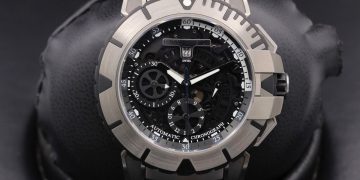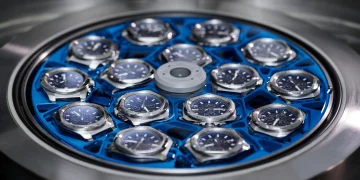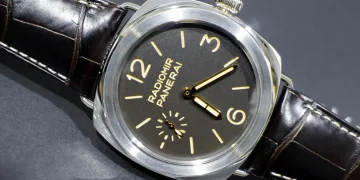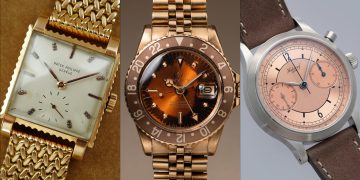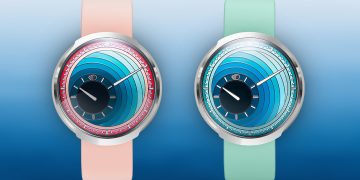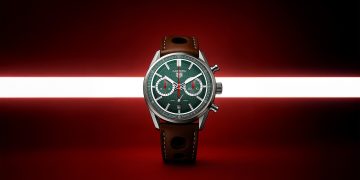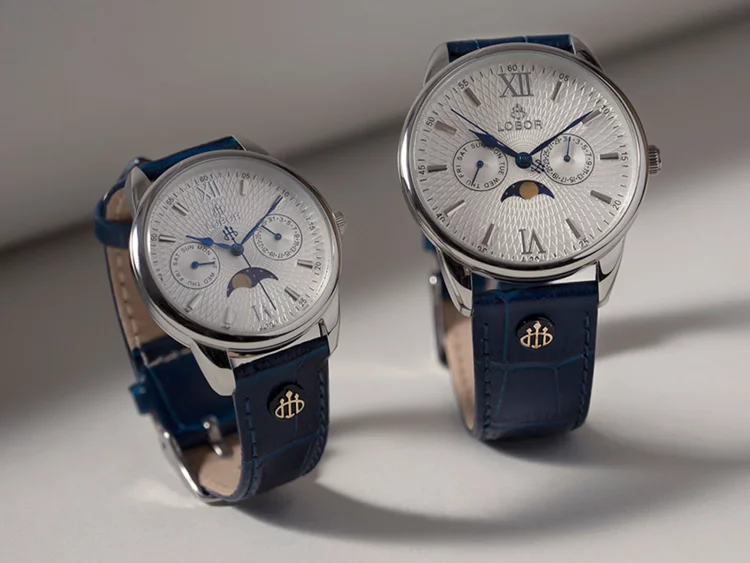Introduction:
When it comes to watches, two of the most popular types are automatic mechanical watches and quartz watches. Both have their unique advantages and appeal, but they also have distinct maintenance needs due to the differing technologies that power them. Whether you’re a watch enthusiast or just a casual wearer, understanding the maintenance requirements of these two types of watches is crucial for prolonging their lifespan and ensuring they continue to perform at their best.
In this article, we’ll explore the key differences between automatic mechanical watches and quartz watches in terms of their maintenance demands. We will dive into the various components of each type, why they require different levels of attention, and provide tips on how to properly care for both kinds of timepieces.
1. Automatic Mechanical Watches: Maintenance Needs
1.1 Overview of Automatic Mechanical Watches
An automatic mechanical watch is powered by the movement of the wearer’s wrist, which winds the mainspring, storing energy to power the watch’s movement. These watches contain a series of intricate gears, springs, and a balance wheel that work together to keep time.
While automatic watches do not require a battery like quartz watches, they do require regular maintenance to ensure their longevity and precision. Here are the primary maintenance considerations for automatic watches:
1.2 Regular Lubrication and Cleaning
The movement of an automatic watch relies on numerous tiny components working together in harmony, including gears, the escapement, and the balance wheel. These parts are constantly in motion, which can lead to friction and wear. To prevent this, lubrication is essential.
- Lubrication: Over time, the oils used to lubricate the various moving parts of the watch can dry up or become dirty. This can result in increased friction between the components, which can cause wear, damage, or inaccurate timekeeping. It is recommended to have automatic watches serviced every 3-5 years, during which the lubricants are replaced, and the watch is thoroughly cleaned.
- Cleaning: Dust, dirt, and moisture can accumulate inside the watch movement, even with a solid case. A professional cleaning can help remove any contaminants that might affect the performance of the movement, ensuring smoother operation and preserving the watch’s accuracy.
1.3 Winding and Power Reserve
Automatic watches are designed to be powered by wrist movement, but if they are not worn regularly, they will stop functioning. If you don’t wear your watch for a while, it’s important to wind it manually to ensure the movement continues to function smoothly. For watches with long power reserves, this can be done every couple of days, but for those with a shorter power reserve, regular winding might be necessary.
If you have a valuable automatic watch, consider investing in a watch winder—a device that keeps the watch moving even when not being worn. This helps maintain the proper functioning of the movement and ensures it is always ready to wear.
1.4 Servicing the Movement
The mechanical movement inside an automatic watch is a complex system of gears, springs, and tiny components. Over time, these parts can wear down or become misaligned, affecting the accuracy and functionality of the watch. Regular servicing is necessary to inspect the movement, calibrate it if necessary, and replace any worn-out parts.
For instance, the balance spring (also called the hairspring) is a crucial part of the watch’s timekeeping mechanism. If this component is damaged or starts to lose its tension, the watch will lose or gain time. A trained watchmaker can calibrate the movement and replace any faulty parts to restore the watch to its original specifications.
1.5 Water Resistance and Seals
Automatic watches often come with a water-resistant feature. Over time, the seals that protect the watch from moisture and dust can degrade, leading to potential water damage. It is important to have the gaskets and seals checked regularly, especially after battery replacement or opening the case for servicing. Water resistance should be checked at least once a year, especially for watches that are regularly exposed to water.
2. Quartz Watches: Maintenance Needs
2.1 Overview of Quartz Watches
Quartz watches are powered by a battery that sends an electric current through a small quartz crystal, causing it to vibrate at a precise frequency. These vibrations are used to drive a motor that moves the watch hands. Quartz watches are generally more accurate and require less maintenance than mechanical watches due to their simpler design.
However, like all watches, they still require certain levels of care and attention. Below are the key maintenance aspects for quartz watches:
2.2 Battery Replacement
The most common maintenance task for a quartz watch is battery replacement. Unlike automatic watches that rely on wrist movement to keep them running, quartz watches rely on a battery to power the watch. Depending on the type of battery and the complexity of the watch, a battery typically needs to be replaced every 1 to 3 years.
When replacing the battery, it’s important to have it done by a professional or authorized dealer to ensure that the watch is properly sealed to prevent dust or moisture from entering the case.
2.3 Checking the Gaskets and Water Resistance
Similar to automatic watches, quartz watches also contain gaskets that prevent water and dust from entering the watch case. If you use your quartz watch for swimming or daily exposure to water, these seals may wear down over time. It is important to have the water resistance checked during regular maintenance, particularly if the watch has been opened for battery replacement.
Watchmakers will test the water resistance and replace the gaskets if necessary. It is generally recommended to check water resistance every 12 to 18 months to maintain the integrity of the watch.
2.4 Cleaning the Movement and Exterior
Although quartz watches don’t require the same level of internal maintenance as automatic watches, cleaning the movement and the exterior is still essential. Dust and dirt can accumulate in the movement or under the crystal, which could potentially affect the watch’s functionality or appearance.
For example, a buildup of dust inside the case can lead to damage in the delicate motor or other components. Regular cleaning of the watch’s exterior (such as the bracelet, case, and crystal) will help maintain its appearance.
2.5 Servicing the Movement
Unlike automatic watches, quartz watches generally require less servicing of the internal movement. However, if the watch starts to lose accuracy, has been exposed to extreme conditions, or shows any other signs of malfunction, it is important to have it checked by a professional. The movement may need to be adjusted or parts may need to be replaced to ensure it continues to keep accurate time.

3. Key Differences in Maintenance
3.1 Complexity of the Movement
The most significant difference between automatic mechanical watches and quartz watches in terms of maintenance is the complexity of the movement. Automatic mechanical watches are much more intricate, requiring more frequent and specialized servicing to ensure that the numerous tiny parts function harmoniously. This includes lubrication, calibration, and movement inspection, which are essential for keeping the watch working at optimal levels.
On the other hand, quartz watches have simpler mechanisms and are more durable in the long run. They typically require battery replacement and occasional checks of the seals and water resistance. Servicing the movement itself is much rarer in quartz watches unless there are issues with the timekeeping accuracy.
3.2 Frequency of Maintenance
- Automatic Watches: These require servicing every 3-5 years, depending on the complexity of the movement and how frequently the watch is worn. Maintenance intervals can vary, but it is essential to have the watch lubricated, cleaned, and checked regularly to avoid wear.
- Quartz Watches: Maintenance is generally less frequent for quartz watches. The primary task is battery replacement, which is typically done every 1 to 3 years. Other maintenance, like checking seals or cleaning the exterior, should be done as needed, but servicing the movement is not as common as with automatic watches.
3.3 Cost of Maintenance
Because automatic mechanical watches have more intricate movements, their servicing tends to be more expensive compared to quartz watches. Replacing the oils, checking the movement’s performance, and ensuring the parts are in optimal condition can be costly.
For quartz watches, the maintenance cost is generally lower. Battery changes are relatively inexpensive, and most repairs are less labor-intensive. However, if there are issues with the movement or a replacement of a rare part is needed, the cost could rise.
4. Conclusion
The maintenance needs of automatic mechanical watches and quartz watches differ significantly due to their unique mechanisms. Automatic watches require regular servicing, lubrication, and movement checks to ensure they remain accurate and function properly. In contrast, quartz watches are simpler and primarily require battery replacements, occasional seal checks, and cleaning.
While both types of watches benefit from proper care, automatic watches are more complex and require more frequent attention to maintain their performance. Conversely, quartz watches are more durable and require less maintenance over time, making them a more low-maintenance option for many users. Understanding these differences is essential for watch owners who want to preserve the longevity and accuracy of their timepieces. By following the appropriate maintenance schedules and seeking professional care when needed, both types of watches can continue to perform reliably for many years.



